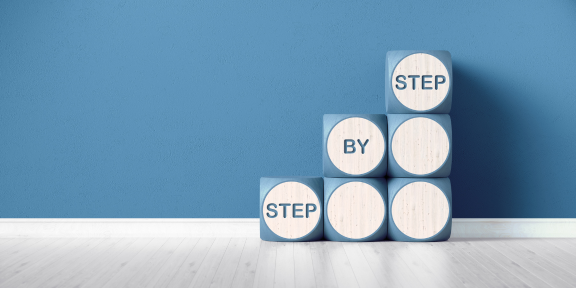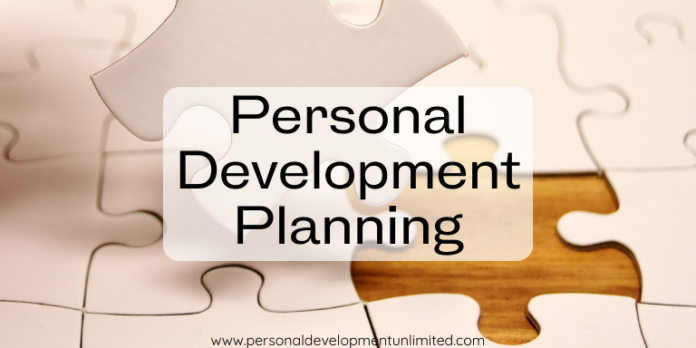What is a Personal Development Plan?
A personal development plan (PDP) is a tool for self-improvement and growth. It is a document that outlines an individual’s goals and aspirations, as well as the strategies and actions needed to achieve them. A PDP can help individuals identify their strengths and weaknesses, and create a roadmap for personal and/or professional development.
Why is a Personal Development Plan Important?
A PDP is important for several reasons. Firstly, it helps you identify your goals and aspirations, and develop a plan to achieve them. This can help you focus your efforts and make progress towards your desired outcomes. Additionally, a PDP can help identify areas where you want to improve your skills and knowledge, make your personal life better and develop a plan to do so.
A PDP can also help you stay motivated and accountable. By having a plan, you can track your progress and make adjustments as needed. This can help you stay on track and motivated, even when faced with challenges or setbacks.

How to Create a Personal Development Plan
There are lots of different ways to create a personal development plan (PDP). The most important thing about creating a PDP is to create it in a way that works for you. Additionally, as we will discuss, your PDP does need to be specific in what you are wanting to accomplish and having the steps to get there.
The first step in creating PDP is to determine if you are making a general PDP for your life or for a specific area of your life. You can also make a PDP for a couple areas of your life that you really want to work at the moment.
Steps for Creating a Personal Development Plan
- Identifying Your Goals: The first step in creating a PDP is to identify your personal or professional goals. This could include career goals, personal growth goals, or any other areas you want to improve in your life. Sometimes it is helpful to have a PDP for each area you want to improve on.
- Assessing Your Skills and Abilities: The next step is to assess your current skills and abilities. This can help you identify areas where you need to improve and develop a plan to do so. It is always helpful to determine what you are doing well. When you know what you are doing well it becomes a building block for other areas you want to improve in.
- Defining Action Steps: Once you have identified your goals and assessed your skills, the next step is to define specific action steps to achieve your goals. This could include developing new skills, seeking out new opportunities, or working with a mentor or coach.
- Setting a Timeline: It is important to set a timeline for achieving your goals. This can help you stay focused and motivated, and track your progress over time.
- Review and Adjust: Finally, it is important to regularly review and adjust your PDP as needed. A review is not just looking at what went wrong or what you didn’t do. It can involve looking at unanticipated challenges that arose. It also helps you see what you did well and how you can continue to improve. This can help you stay on track and make progress towards your goals.

How would a person know what areas to focus on in a personal development plan?
A person can identify the areas to focus on in a personal development plan (PDP) by doing a self-assessment or a self-reflection exercise. This involves taking an honest look at oneself and evaluating areas where there is room for growth and improvement.
Here are some steps to help identify the areas to focus on in a PDP:
- Start with your goals: Begin by identifying your personal and professional goals. This will help you to align your PDP with your desired outcomes.
- Evaluate your strengths and weaknesses: Consider your strengths and areas where you excel, as well as your weaknesses and areas where you may need to improve. Reflect on your past experiences, feedback from others, and your own self-awareness to identify these areas.
- Consider feedback: Ask for feedback from those around you, such as colleagues, friends, and family. They may be able to offer valuable insights into areas where you may need to focus on to improve.
- Identify areas for growth: Based on your self-reflection and feedback, identify specific areas where you want to grow and improve. These could be skills, knowledge, behaviors, or habits that you want to develop or change.
- Prioritize: Once you have identified areas for growth, prioritize them based on their relevance to your goals and their potential impact on your personal and professional life.
- Develop an action plan: Finally, develop a specific action plan for each area of focus. This could include attending training or courses, seeking out mentors or coaches, practicing new behaviors or habits, or seeking feedback from others.
By following these steps, you can identify the areas to focus on in you PDP and create a roadmap for personal and professional growth. Remember, a PDP is a dynamic document that can be adjusted and updated over time based on changing goals and priorities.
Here are specific areas of life you can develop a PDP for:
Personal Growth – this would include areas of self-improvement such as emotional intelligence, mental toughness, confidence, time management and other topics that can apply generally in all areas of your life.
Financial – this area can include items like saving, managing money, investing and anything related to money in your world.
Career – this is the area we most often think about with a PDP and is often referred to as a professional development plan. These professional development goals help you in your current position, develop skills to move up the ladder or could even be starting your own business.
Physical – a PDP in the physical arena would include everything that helps you physically from exercise, sleep, eating healthy and everything in between.
Social/Relationships – this area of personal development involves anything related to getting out in the world and making connections. Specific areas could be finding a romantic partner, being a better parent, making friends, how to network and much more.
Spiritual – this is the existential area of personal development and the topics that work to bring you inner peace. The spiritual aspect of personal development includes mindfulness, meditation, living by your values and more.
Your personal development plan can include one or more of these areas. Some topics such as procrastination or perfectionism might run over to other areas. Remember to focus on no more than three areas at a time. Too many goals and you will find that you will not meet them all. It is better to focus on a small area and see success.

Using Values in Your Personal Development Plan
Values play an important role in a personal development plan (PDP) as they help individuals to identify and prioritize what is important to them. Values can be thought of as guiding principles that define what is meaningful and important in a person’s life, and they can influence the choices and decisions an individual makes.
Here are some ways that values can fit into a personal development plan:
- Identify personal values: The first step in incorporating values into a PDP is to identify personal values. This involves reflecting on what is important to you and what motivates you in your personal and professional life. Examples of values could include honesty, integrity, compassion, or creativity.
- Prioritize values: Once you have identified your personal values, prioritize them based on their importance to you. This can help you make decisions and take actions that are aligned with your values.
- Evaluate goals: Consider your personal and professional goals and evaluate them in light of your values. Ask yourself if your goals are aligned with your values and if they will help you to live a fulfilling and meaningful life.
- Make values-based decisions: When faced with decisions, use your values as a guide. Ask yourself how each option aligns with your values and make choices that are in line with what is important to you.
- Reflect and adjust: Regularly reflect on your progress in living according to your values and adjust your PDP as needed. This can help you to stay on track and make sure that your actions and decisions are in line with your values.
Incorporating values into a PDP can help you to create a plan for personal and professional growth that is aligned with what is most important to you. It can also help to provide a sense of purpose and direction, and can support individuals in making decisions that are in line with your values.
Wrapping Up
A personal development plan is a powerful tool for self-improvement and growth. By identifying your goals, assessing your skills, and developing a plan to achieve your desired outcomes, you can create a roadmap for personal or professional success.
Whether you are looking to advance your career, improve your personal relationships, or achieve any other goal, a PDP can help you get there. Just remember that your PDP changes and grows as your personal goals change and is an ongoing process. Sometimes we might feel that having a plan limits us. However, having a plan actually gives our lives a sense of freedom.
So why not start creating your own personal development plan today?
Personal Development Unlimited is your go-to place to be You, Without Limits. We bring together personal development and self-improvement articles, books, courses and videos in one place. Find your self-growth opportunities easily.
Comments
0 comments



